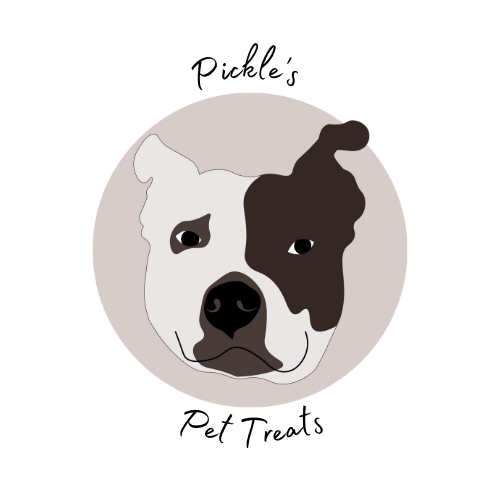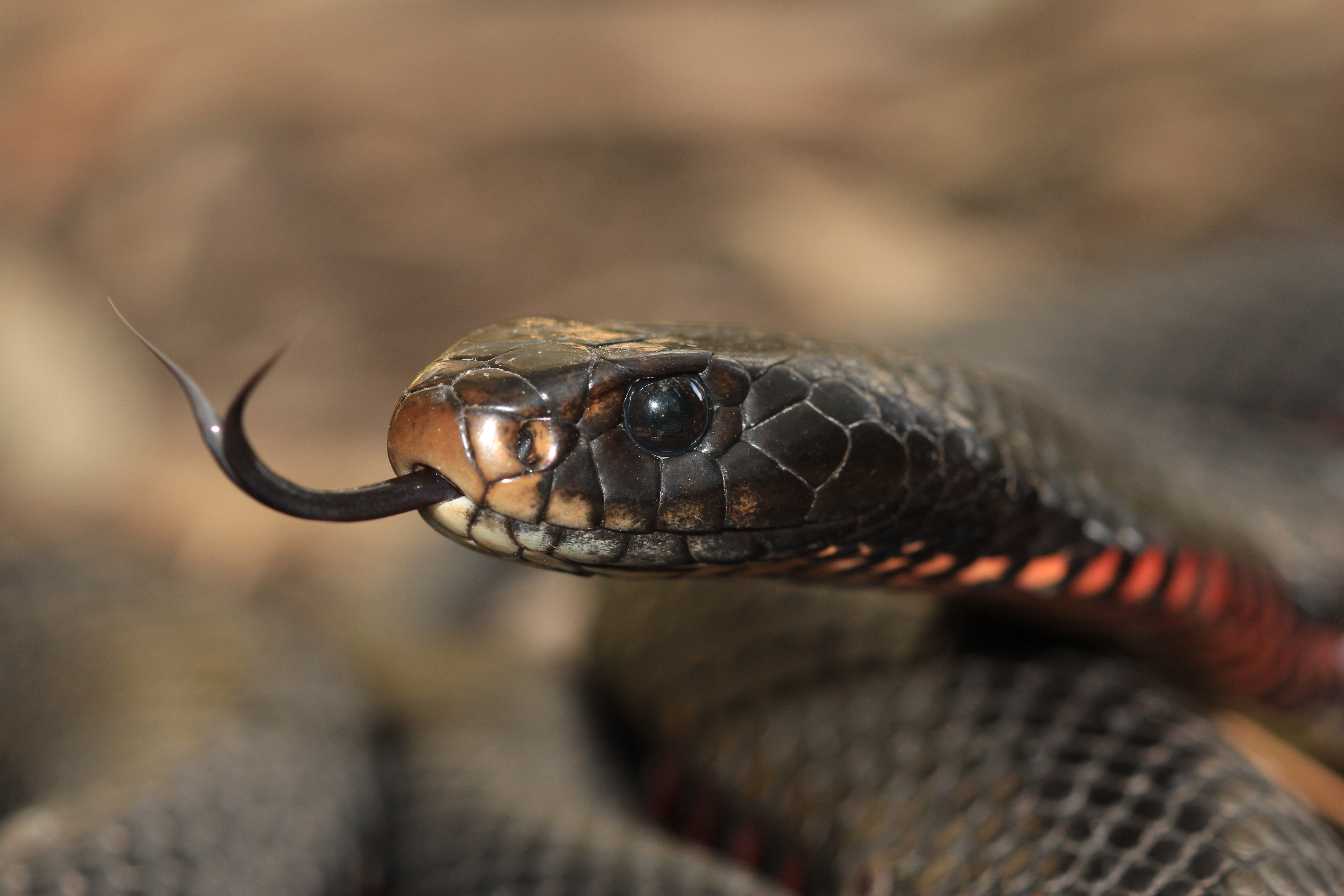Hundreds of pets are bitten by snakes each year in Australia. According to Australia’s veterinary snakebite registry, SnakeMap, there were 624 reported cases among pets in 2022, with 419 dogs and 205 cats. This highlights the significant risk that snakes pose to pets, especially in regions where venomous snakes are prevalent. The most commonly encountered snakes by pets in Australia are the Eastern Brown Snake and the Tiger Snake, and cause the highest number of envenomations.
Snake Activity and Behavior
Snakes are active when the temperature is around 20-27°C. They thermoregulate by basking in sunny spots in the cool early morning and resting in the shade during the middle of hot days.
Tiger Snake (Notechis scutatus)
The tiger snake is found in southern regions of Australia and is highly venomous. It is responsible for the second-highest number of bites in Australia. Tiger snakes are often found in wetlands, creeks, and rivers, but they can also be encountered in suburban areas. Their venom can cause severe pain, paralysis, and even death if not treated promptly.
Eastern Brown Snake (Pseudonaja textilis)
The eastern brown snake is found throughout the eastern half of mainland Australia. This fast-moving and aggressive snake is responsible for more deaths each year in Australia than any other group of snakes. Its venom causes progressive paralysis and stops the blood from clotting. Brown snakes are commonly found in rural and suburban areas, making them a significant threat to pets.
Red-Bellied Black Snake
The red-bellied black snake is native to the east coast of Australia, and cause a high number of envenomations along the South Coast of NSW. They are most commonly seen close to dams, streams, and other bodies of water, although they can venture up to 100 meters away to search for food, including into nearby backyards.
The red-bellied black snake prefers shallow water with water plants, logs, or debris, and can hide in multiple places in their habitat, including logs, old mammal burrows, and long grass. Generally not an aggressive species, they withdraw when approached. However, when provoked, they will recoil into a striking stance as a threat and may bite as a last resort.
When not hunting or basking, they may be found beneath timber, rocks, rubbish, or down holes and burrows.
Other Venomous Australian Snakes
Australia is home to many venomous snakes. Here are some of the most notable ones:
- Inland Taipan (Oxyuranus microlepidotus): Known as the world’s most venomous snake, the inland taipan is found in remote areas of Queensland and Southeastern Australia. Despite its potent venom, it is calm and shy.
- King Brown Snake (Pseudechis australis): Also known as the mulga snake, it is the heaviest venomous snake in Australia and has the largest-recorded venom output of any snake in the world.
- Death Adder (Acanthophis antarcticus): Known for its fast strike, the death adder is found in various habitats across Australia. It is one of the world’s fastest striking snakes.
- Coastal Taipan (Oxyuranus scutellatus): Found in coastal regions of northern and eastern Australia, this snake has the longest fangs of any Australian snake and is highly venomous.
Reducing the Risk of Snakes on Your Property
To reduce the risk of snakes gathering on your property:
- Dig your fence or snake mesh a foot into the ground.
- Keep your yard tidy by clearing undergrowth, trimming tree foliage so that it doesn’t touch the ground, filling holes in the ground, mowing the lawn, and clearing away toys, rubbish, and tools which make great hiding places for snakes.
- Clean up any spilled food, fruit, or bird seed, which can attract rodents, and therefore snakes.
- Keep chicken pens, rabbit hutches, and feed storage sheds clean of spilled food, and store feed and hay in sealed rodent-proof containers.
- Store firewood away from the house.
- Move birdbaths, small pools, and any other body of water away from the house, or remove them completely if snakes are a problem in your area.
- Always seek professional help in the removal of a snake from your property.
Ineffective and Harmful Snake Deterrents
Commercial snake deterrents such as the vibrating type are often not effective, and some snakes have been spotted basking on top of them!
Some snake catchers and online forums suggest using motor engine sump oil (oil that has been burnt) to coat the grass at the fence-line. While this is effective in burning the skin of snakes and preventing them from crossing, it poses huge environmental risks. Motor oil picks up hazardous contaminants such as lead, cadmium, chromium, and arsenic. When released into the environment, these toxins pose a risk to aquatic life, plants, animals, shellfish, and even humans. One liter of oil has the potential to contaminate one million liters of water.
Another option suggested is a mixture of essential oils, such as eucalyptus, lavender, tea-tree, and sandalwood, used in the same way as engine sump oil. However, each essential oil comes with its own potential ecological issues, and the Material Safety Data Sheet (MSDS) should be checked before usage. They may have long-lasting effects on marine life, and the MSDS for most of these oils will state that they should never come into contact with water supplies or groundwater. Many oils, especially eucalyptus, are extremely flammable and are not recommended for use in hot, dry weather.
Natural Snake Deterrents
If snakes are a problem on your property, consider researching peacocks and guinea fowl. They love to hunt and eat snakes, but they must be able to roost up in the trees to protect themselves from foxes.
Snake Bites in Pets
Pets are most often bitten around the head and forelimbs. Usually, the closer the bite is to the heart, the quicker the venom will be absorbed into the pet’s system and distributed around the body.
The type of snake (some species of snake are more venomous than others), the amount of venom injected (depends on the size and maturity of the snake), and the site of the snake bite are all contributing factors to the reaction your pet may have to envenomation. Some snakes may also deliver a “dry bite” which contains no venom.
If your dog is a hunting breed or just likes to chase small animals, consider snake avoidance training. You can contact a local dog trainer to find out more.
Signs of Snake Bite
The signs of snake bite are varied. They may show some or all of the following signs:
- Sudden weakness or collapse
- Shaking or twitching
- Vomiting
- Dilated pupils unresponsive to light
- Bloody or brown urine, if able to urinate at all (in later stages)
- In the later stages, paralysis and death may occur
What to Do If Your Pet Is Bitten
If your pet is bitten by a snake of any type, follow these precautions:
- Remain calm and call your vet.
- Keep your pet as still as possible until you can reach a vet to help reduce circulation of the venom throughout the body.
- Try to keep the bite site below the level of the heart.
- Treatment options such as cold packs, ice, tourniquets, alcohol, bleeding the wound, and trying to suck out venom should not be attempted in place of getting your pet to the vet — they just waste precious time. Your first priority is getting to the vet.
Remember, if your pet is bitten, do not try to catch or kill the snake. All Australian snakes are protected, and you may expose yourself to unnecessary danger. You also do not need to bring the snake to the vet if it’s dead for identification. You can also become envenomated yourself if you accidentally get scratched or punctured by the fangs of the dead snake. Your vet may be able to test your pet to determine the species of snake.
Call your local snake catcher to remove snakes from your property and help teach you how to prevent them from coming back.
Pickle’s Pets updated 2024
Written by Brittany Overton

